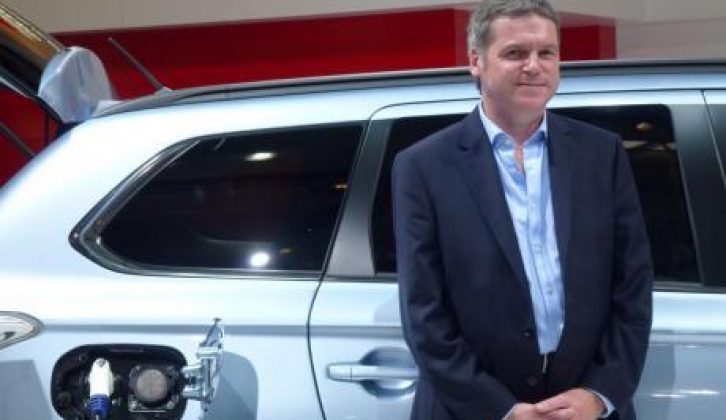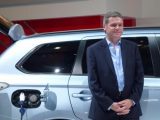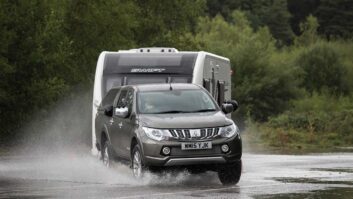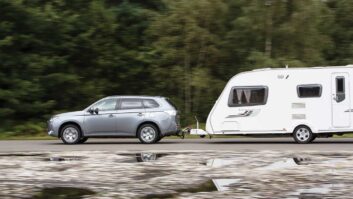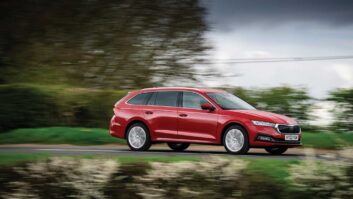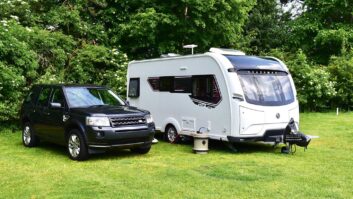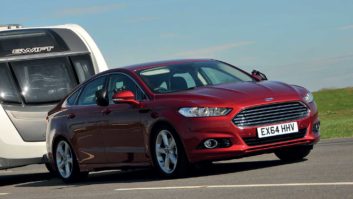[tl:gallery size=460×345]
Speaking at the Paris motor show last week, Bradley (pictured above) confirmed
that the new Outlander PHEV will be homologated for towing. “Expect a towing limit around two-thirds that
of the diesel Outlander.” Practical Caravan spoke to a senior exec from
Mitsubishi in Japan who told us he expected the towing limit to be confirmed as
1500kg. That’s low for a 4×4, but still enough to tow many mid-sized tourers.
Even when hybrids have been homologated for towing, the high
purchase price has been off-putting. A Lexus RX450h costs from £44,495, for
example.
Bradley wouldn’t be drawn on how much the Outlander PHEV
will cost – not surprising when the price of the diesel model hasn’t been
announced – but he is keenly aware that the car will have to be priced
carefully to sell.
“We have looked closely at what other people are charging
for their hybrids and have been surprised by the price premium,” said Bradley. “Our
hybrid will cost more than the diesel, but for the right customer the running
cost savings will cover the extra purchase price over three years.”
The government’s £5000 grant for low-carbon vehicles will
apply to the Outlander PHEV, so buyers will be able to recoup some of the price
premium straightaway.
The Outlander PHEV is the world’s first production plug-in hybrid
SUV. As ‘plug-in’ implies, the Outlander’s battery can be recharged from an
external power source when the car is parked. That makes the PHEV well suited to drivers who
regularly commute relatively short distances, and so can rely on electric power
alone for their daily journeys, topping the battery each night for a fraction
of what it would cost to fuel a petrol or diesel car. “Our car will travel up
to 30 miles on the electric motors alone. It will be fabulously cheap to run for
anyone driving 30 miles or less every day,” Bradley said.
Since the Outlander PHEV has a petrol engine as well as
electric motors, it avoids the problem of limited range which makes pure
electric vehicles like the Mitsubishi i-MiEV and Nissan Leaf impractical for
drivers who regularly tackle long journeys. With a 30-mile all-electric range
matched to a total claimed range of 547 miles or more, Bradley argues that the Outlander PHEV
offers the advantages of an electric vehicle while tackling the obvious
drawbacks. “People are worried about cost, people are worried about the range.
The PHEV will address these concerns.”
However, Mitsubishi’s UK boss is refreshingly honest in
admitting that the hybrid won’t be the best choice for everyone. “One of the
key things will be qualifying customers,” he admitted. “If you drive a lot of
motorway miles or tow regularly you’ll be better off with a diesel.”
Just how many customers will choose the hybrid over the diesel is uncertain. “It could be a quarter, it could be half,”
said Bradley. Whatever the true split, the towing market is very important to
Mitsubishi and the new Outlander range. “Around half the current Outlanders we
sell leave dealers with a towball already fitted,” said Bradley. “We’d like to
at least match that with the new Outlander.”
Bradley acknowledged that in making the new Outlander diesel
lighter its 85% match figure has dropped compared with its predecessor (85% of
the kerbweight being a sensible limit for safe and secure towing as recommended
by both major caravanning clubs). However, he sees this as a challenge for the
caravan industry to respond to.
“The motor industry has been under huge pressure to make
vehicles lighter and more efficient. We can’t make heavier cars. So caravans
are going to have to get lighter.”
The new Outlander diesel goes on sale in April 2013 with the
PHEV following in July or August.
